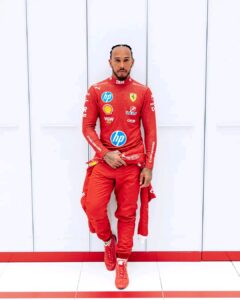
The MotoGP World Championship, known for its relentless speed, daring overtakes, and high-octane competition, is set to undergo one of the most significant technical shifts in its history. The Grand Prix Commission has outlined plans to reduce engine sizes from 1,000cc to 850cc by 2027. This decision, aimed at improving sustainability and leveling the playing field, will inevitably impact the sport’s elite racers, who have dominated under the current regulations. Riders like Francesco Bagnaia, Jorge Martin, and Fabio Quartararo will need to adapt their skills, strategies, and approaches to continue thriving in this evolving landscape. The question is: how will this shift affect the sport’s top talents, and what does it mean for MotoGP’s future?
The Motivation Behind the Shift: Balancing Sustainability and Competition
The decision to scale back MotoGP engine sizes stems from several motivations. With sustainability becoming an increasingly prominent issue across motorsports, reducing engine displacement aligns with broader efforts to lower carbon emissions and fuel consumption. The smaller 850cc engines will be less resource-intensive, likely offering better fuel efficiency and promoting the use of alternative, eco-friendly fuels.
Moreover, the change is intended to level the playing field, allowing manufacturers with smaller budgets to compete more effectively. In recent years, Ducati’s technological superiority has put their riders in a dominant position, with Francesco Bagnaia and Jorge Martin consistently battling at the top. By limiting the sheer power that bikes can generate, the sport hopes to shift the focus from technology back to rider skill, making races more competitive and exciting for fans.
How Will This Impact the Current Stars of MotoGP?
MotoGP’s elite racers are known not only for their speed but also for their ability to extract the maximum performance from highly complex machines. However, a shift to smaller engines means the riding dynamics will change dramatically. Riders who have built their success on aggressive braking and cornering, exploiting the power of the 1,000cc engines, will need to reimagine their approach to racing.
Francesco Bagnaia: Ducati’s Master of Power Management
Francesco Bagnaia, the reigning MotoGP champion, has thrived under the current regulations, mastering Ducati’s powerful engines with precise throttle control and smooth power delivery. Ducati bikes are known for their high horsepower, which has allowed Bagnaia to dominate on long straights and exit corners with superior speed.
With the shift to 850cc, Bagnaia’s advantage of managing raw power will be diminished. Instead of relying on brute horsepower, riders will need to emphasize agility, finesse, and maintaining corner speed. While Bagnaia has proven himself adaptable, his greatest challenge will be adjusting to a bike that requires more careful throttle application and quicker decision-making in tight racing situations.
Jorge Martin: The King of Braking
Jorge Martin, another Ducati rider, has made a name for himself as one of the best late-brakers in the paddock. His aggressive style, combined with Ducati’s powerful acceleration, has made him a formidable competitor in recent seasons. However, smaller engines mean less acceleration out of corners, which could reduce the effectiveness of Martin’s hard-braking technique.
With an 850cc bike, Martin will need to refine his approach, focusing more on carrying momentum through corners rather than relying on aggressive braking and acceleration. The challenge will be maintaining his pace while adapting to a less powerful machine, which could force him to rework the strategies that have brought him success.
Fabio Quartararo: A Return to Pure Riding Skill
If there is one rider who could benefit from the shift to 850cc engines, it’s Yamaha’s Fabio Quartararo. Quartararo has often been praised for his fluid, smooth riding style, which allows him to maintain high corner speeds and make the most out of his bike, even when it lacks the outright power of its competitors.
Quartararo’s skill in managing a less powerful Yamaha in recent seasons positions him well to thrive in the new era of MotoGP. As the emphasis shifts from raw power to precision and cornering speed, Quartararo’s natural talent for maintaining rhythm through corners could allow him to regain his competitive edge, especially against riders more reliant on sheer horsepower.
The Rise of New Contenders: A More Balanced Field?
While the reduction in engine size may present challenges for established stars, it could also provide an opportunity for younger riders and teams with smaller budgets to shine. With a greater emphasis on rider ability and strategy, we may see more diverse podiums and tighter championship battles.
Teams like Aprilia and KTM, which have struggled to compete with the dominant Ducati and Yamaha, may find the new regulations more favorable. The reduced engine power levels the technological playing field, giving teams with smaller R&D budgets a better chance of competing against MotoGP’s heavyweights.
Similarly, young riders coming up from Moto2, who are used to riding less powerful bikes, may adapt more quickly to the new 850cc machines. These riders could challenge the established order, injecting fresh energy into the sport and pushing veterans to their limits.
Strategic Adjustments: The Role of Tires and Fuel Management
Alongside changes in engine displacement, the shift to 850cc bikes will require teams to reconsider tire and fuel management strategies. Smaller engines may result in less tire wear, allowing riders to push harder for longer periods during a race. However, it will also place a greater emphasis on maintaining momentum, as losing speed in a corner could be more detrimental with less power available for recovery.
Fuel management will also play a significant role. While the smaller engines are expected to be more fuel-efficient, teams will need to balance the demands of maintaining race pace with fuel conservation strategies, particularly in longer races or on circuits with long straights.
Conclusion: A New Era Beckons
The transition to 850cc engines by 2027 marks a defining moment for MotoGP. The sport’s top riders, accustomed to managing the power and acceleration of 1,000cc machines, will need to evolve their strategies and refine their skills to remain competitive. For riders like Francesco Bagnaia and Jorge Martin, it represents a new challenge, while for others like Fabio Quartararo, it could signal a return to prominence.
As MotoGP enters this new era, one thing is certain: the competition will be fiercer than ever, with the balance shifting towards rider skill and racecraft. This evolution will not only redefine the careers of MotoGP’s current stars but also open the door for new talents to emerge and challenge the established order. Fans can expect thrilling, unpredictable racing that places the emphasis back where it belongs—on the rider.




